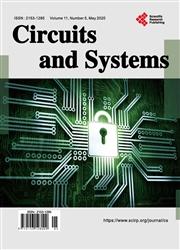Analysis of Electronic Circuits with the Signal Flow Graph Method
引用次数: 4
Abstract
In this work a method called “signal flow graph (SFG)” is presented. A signal-flow graph describes a system by its signal flow by directed and weighted graph; the signals are applied to nodes and functions on edges. The edges of the signal flow graph are small processing units, through which the incoming signals are processed in a certain form. In this case, the result is sent to the outgoing node. The SFG allows a good visual inspection into complex feedback problems. Furthermore such a presentation allows for a clear and unambiguous description of a generating system, for example, a netview. A Signal Flow Graph (SFG) allows a fast and practical network analysis based on a clear data presentation in graphic format of the mathematical linear equations of the circuit. During creation of a SFG the Direct Current-Case (DC-Case) was observed since the correct current and voltage directions was drawn from zero frequency. In addition, the mathematical axioms, which are based on field algebra, are declared. In this work we show you in addition: How we check our SFG whether it is a consistent system or not. A signal flow graph can be verified by generating the identity of the signal flow graph itself, illustrated by the inverse signal flow graph (SFG−1). Two signal flow graphs are always generated from one circuit, so that the signal flow diagram already presented in previous sections corresponds to only half of the solution. The other half of the solution is the so-called identity, which represents the (SFG−1). If these two graphs are superposed with one another, so called 1-edges are created at the node points. In Boolean algebra, these 1-edges are given the value 1, whereas this value can be identified with a zero in the field algebra.用信号流图法分析电子电路
本文提出了一种称为“信号流图(SFG)”的方法。信号流图用有向图和加权图来描述系统的信号流;这些信号被应用于边缘上的节点和函数。信号流图的边缘是小的处理单元,输入的信号通过这些处理单元以一定的形式进行处理。在这种情况下,结果被发送到传出节点。SFG允许对复杂的反馈问题进行良好的视觉检查。此外,这样的表示允许对生成系统(例如,网络视图)进行清晰和明确的描述。信号流图(SFG)基于电路数学线性方程的图形格式的清晰数据表示,允许快速实用的网络分析。在创建SFG期间,观察到直流情况(DC-Case),因为正确的电流和电压方向是从零频率绘制的。此外,还声明了基于域代数的数学公理。在这项工作中,我们还向您展示:我们如何检查我们的SFG是否是一个一致的系统。可以通过生成信号流图本身的恒等式来验证信号流图,由逆信号流图(SFG−1)表示。一个电路总是生成两个信号流图,因此前面章节中已经给出的信号流图只对应解决方案的一半。解的另一半是所谓的恒等式,表示(SFG−1)。如果这两个图相互叠加,则在节点上创建所谓的1边。在布尔代数中,这些1边被赋值为1,而这个值在域代数中可以用零来标识。
本文章由计算机程序翻译,如有差异,请以英文原文为准。
求助全文
约1分钟内获得全文
求助全文

 求助内容:
求助内容: 应助结果提醒方式:
应助结果提醒方式:


